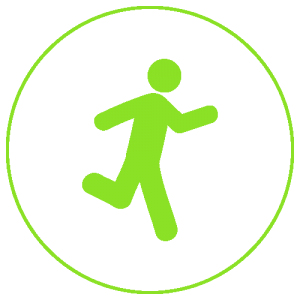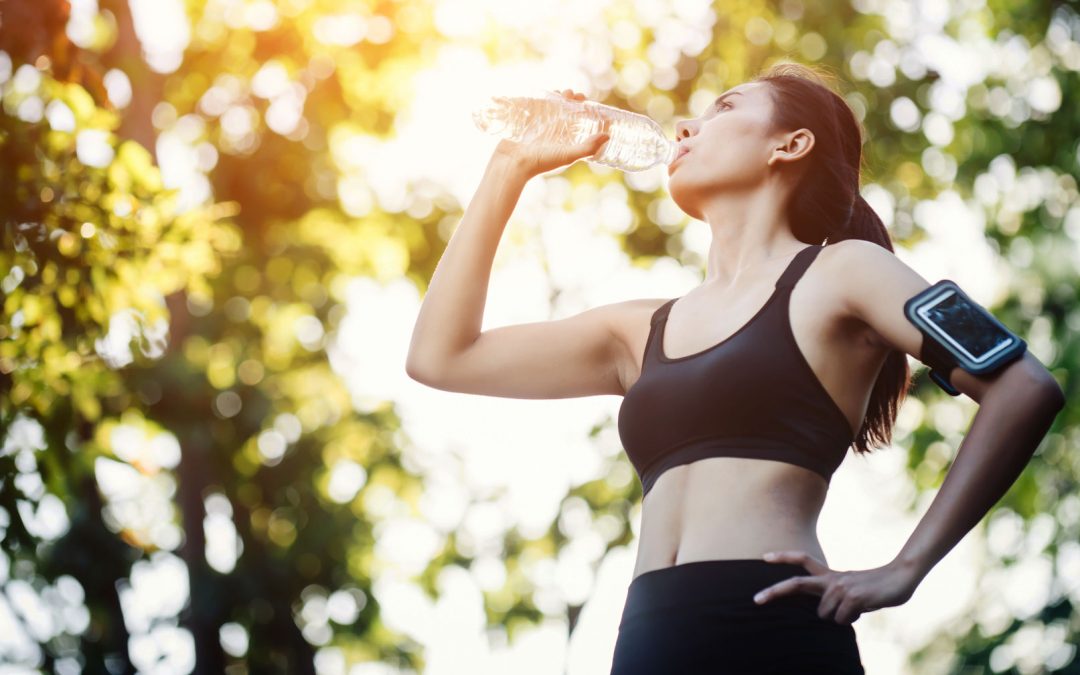
Monday 30 July 2018
Water is intrinsically linked to the proper functioning of our bodies, which are up to 60% water. For sports people, this principle is of crucial importance for their well-being, performance and recovery, especially in all sports where the effort is over a prolonged period of time and is performed in unfavourable and dehydrating weather conditions.
In short: summer running must above all take account of frequent and practical opportunities for adequately hydrating, otherwise there will not only be a drop in performance but real health risks.
Consider the fact that with just 2% dehydration there is a significant drop-off in sporting performance.
In summer, most fluids are dissipated to perform the body’s thermo-regulation function. It is very easy at this time of year for the body to exceed its normal temperature range (36-37.2C°), and in response to this, the body sweats.
Sweat is not just water, it also contains various substances such as magnesium, potassium, sodium, which are very important to our body.
In an hour of running, you can lose several litres of fluids, so we can see why we have to take action to limit the losses, replacing them as much as possible and in the most appropriate way.
Fluids must be replaced in an appropriate manner so it is important to listen to your body and to rehydrate with the right amount, wherever possible. So avoid under-hydrating whilst running, perhaps because you don’t like stopping too often or because there is no possibility (choose suitable routes and prepare everything before training to ensure you are not caught out) and at the same time avoid drinking at breaks in excessive amounts compared to our actual needs.
In this case, it is better to drink the quantity we need and stop again further on. Advice that seems fundamental but isn’t, where the word balance and knowing how to listen correctly to your needs, become key factors, as you will realise.
In addition, since sweating not only expels water, it would be ideal to first prepare a drink containing substances such as potassium and magnesium, so as to encourage adequate and effective rehydration. Of course, the conditions in which you run are also key for this process: avoid the hottest times of the day and favour routes with plenty of shade but even if you run in pine forests all of the rules and precautions described so far still apply. In extreme heat conditions, it is best to wet your hair before and during the session and to cool down at fountains, in addition to the hydration tips described above.
Read more
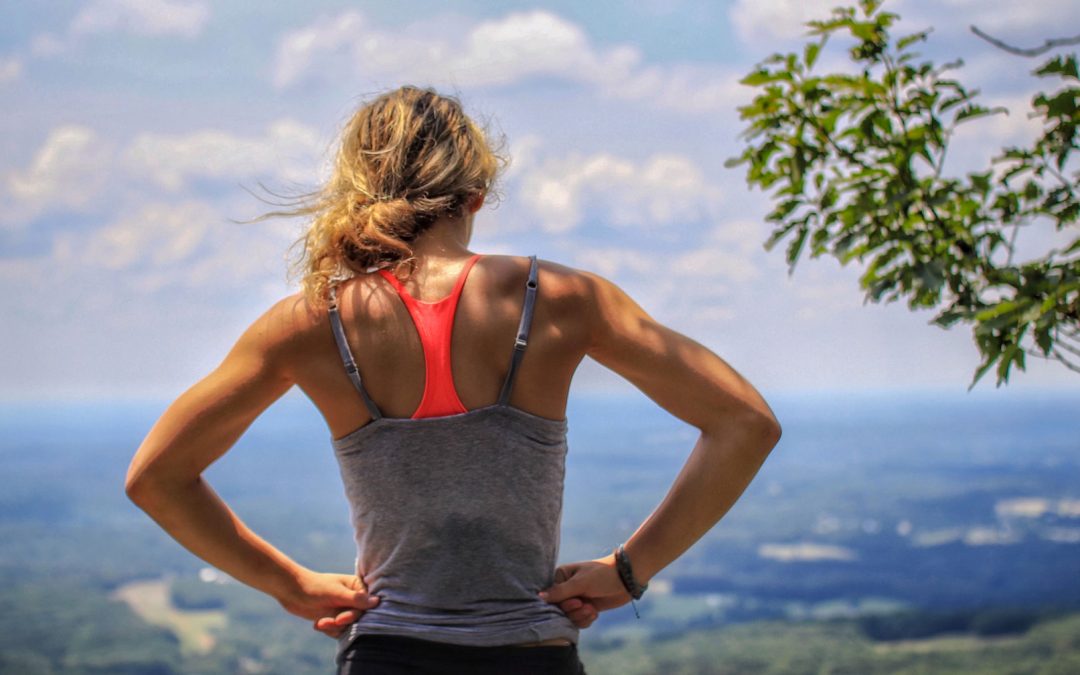
Monday 23 July 2018
There is specific clothing for runners in every season, designed to provide an optimal session and to make the runner feel comfortable. At the hottest times of the year, it is important to wear clothing that facilitates transpiration, making our running as efficient as possible, since there are many seasonal factors that put us at a disadvantage in the search for performance and stamina.
Here is our recommendation for a ‘typical’ outfit for the summer season, from head to toe.
The feet are largely dependent on shoes which provide stability, the right amount of cushioning and which are suitable for your level of running and the type of training you are doing, rather than the season itself. As far as socks are concerned, there are versions available in specialist shops which help with aerating your feet, especially around the soles.
Shorts should be short, giving freedom of stride and general ease of movement. Some people prefer classic running shorts whilst others prefer cycling shorts to prevent irritation from chafing of the thighs. Other types of shorts (non-technical) are also good, as long as they are made of light and breathable material and guarantee optimal mobility. Under the shorts, boxers are a no-no, briefs are acceptable.
On the upper half of the body, people typically wear a T-shirt or vest, made of breathable fabric. For women a crop-top made from technical material is also widely use. In summer, it is natural to sweat so we need to wear clothing that facilitates perspiration and which does not further increase body temperature, exposing us to significant risks.
Your head and eyes should also be protected, although many runners end up underestimating this aspect. A peaked cap will protect us from the summer heat reducing the risk of sunburn, plus it is useful to protect the eyes with sports sunglasses.
Of course, clothing is only one part of the many summertime precautions which runners of all levels need to bear in mind. These include: avoiding the hottest times of the day, eating and hydrating correctly and choosing the right routes.
FIDAL Instructor Lorenzo Andreini
Read more
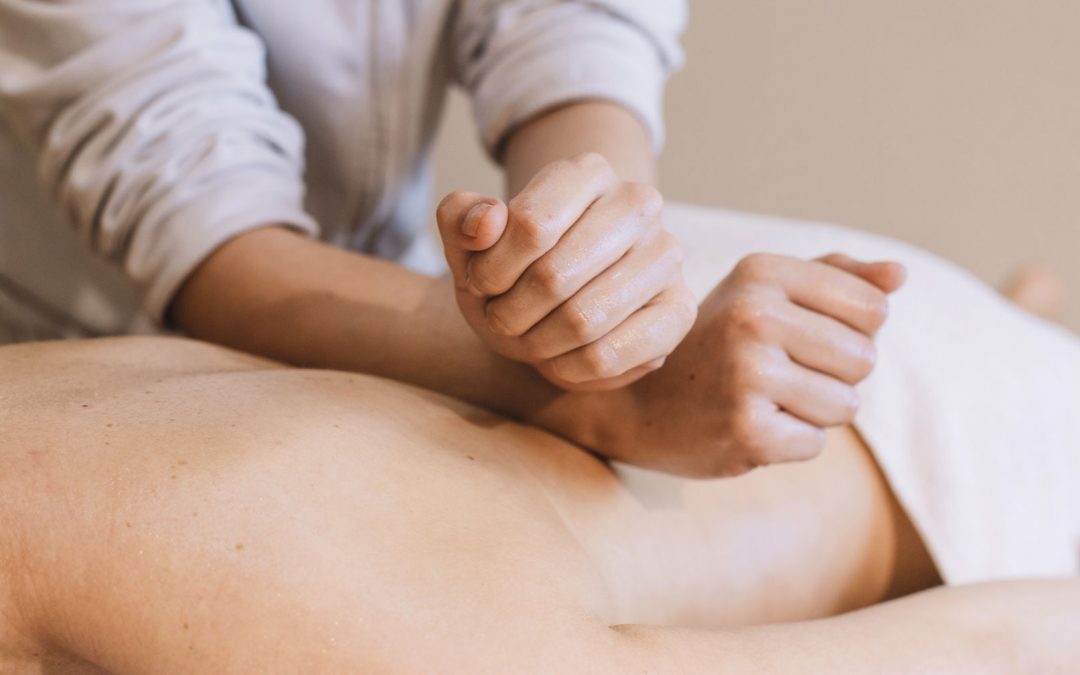
Monday 16 July 2018
Massage has its roots in ancient times. The first written documents on this subject date back more than 5,000 years but massage techniques have continued to develop over the centuries: it is not difficult to find traces in Greek and Roman culture, thought the Middle Ages and up until modern times.
The main effects of a massage are those of a greater supply of oxygen and nutrients in a specific area, helping to eliminate waste products and excess fluids, not to mention the positive effects on the lymphatic system, where it helps with the disposal of toxins. Massage should not be underestimated for a moment of relaxation, helping recovery, as well as providing a break between one source of stress and another. There are many more beneficial effects of massage but today we will focus mainly on the importance of tension-relieving massage in athletes of all levels.
You often happens how football, volleyball, basketball, etc. teams have one or more masseurs on their medical staff. This is because in the intensive and repeated efforts it is very common to encounter increases in muscle tension that can result in genuine muscle spasms, which can be painful and limit the athlete’s performance.
A spasm is not the sole preserve of the sports person at any level but it can also more simply as a result of bad habits: think of back stiffness as a result of sitting for a prolonged period with bad posture, of lumbar pains in people who spend a lot of time sat down and so on.
For runners, the most commonly affected areas are the muscles of the thighs, calves and not infrequently problems in the back and other areas of the body.
It is therefore important to use massages, performed solely by a trained professional, as a preventative technique or following intense efforts.
Professional masseurs may use special oils or manipulations to help relieve (potential) spasms and in general to promote improve oxygenation of the muscle fibres, remove toxins, help to prevent injuries and to provide you with a pleasant and relaxing experience.
Lorenzo Andreini, FIDAL Physiotherapist and Instructor – Santucci Running Coach
Read more
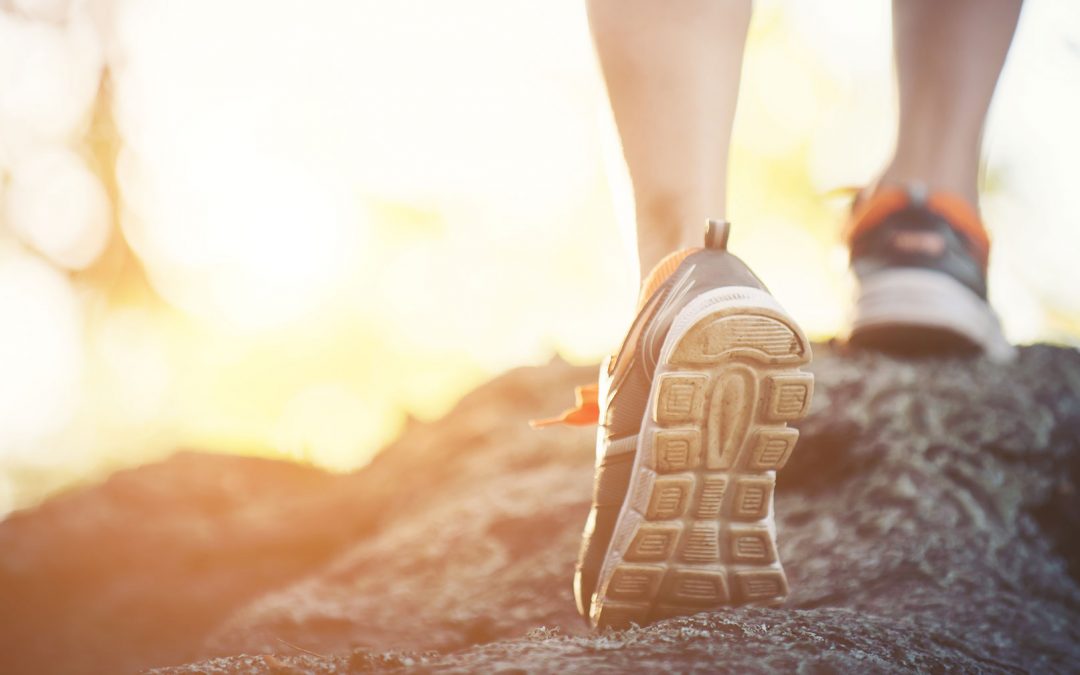
Monday 9 July 2018
The idea of tackling any terrain, whether in the woods or at high altitudes, can even be defined as a philosophical choice or a way of life or even just a desire for freedom.
In running the shoe is undoubtedly important; trail running, which is part of the world of running to all intents and purposes, requires a choice that delivers certain features.
Today we can safely say that the market offers a wide range of options and models, from the super light competition shoe, to one that is comfortable and stable, but what are the main features of a trail running shoe?
The first aspect is that they ensure stability; the terrain that we encounter varies in terms of the level of support it offers, so our feet are constantly and unevenly under strain.
The stability of the shoes is provided by inserts positioned in the heel, forefoot area or laterally. There are also schools of thought that are against inserts but this is another issue.
In addition to anti-pronation systems that may consist of thick compound inserts on the inner sides of the midsole or actual rigid frames, it is useful to consider the lacing systems.
We must ensure that the foot and the shoe fit as one, whether using a traditional lacing system or a more technologically advanced ones, in order to prevent rubbing and blisters.
When buying a trail shoe, it is worth bearing in mind that, after hours of running on demanding terrain, tiredness can cause runners to move centre of gravity, becoming “mechanically different”.
It is therefore advisable to consider this aspect when choosing your shoe.
The following are also not to be underestimated, in order of importance:
the level of protection for impacts with the ground;
cushioning in relation to factors such as the athlete’s weight, materials and upper;
the type of sole;
the “tread”.
These are aspects of great importance because of the uneven terrain.
The soles must not be hard but must facilitate freedom of movement of the foot to allow for natural torsion during the running phase.
The “grip” created by the lugs and their arrangement is the most personal aspect in the choice of shoe, ensuring the grip when going downhill and offering traction when going uphill.
A good trail shoe requires a mixture of elements that is not easy to achieve but thanks to the experience that comes from practising the discipline, a trail runner will increasingly refine their ability to know how to choose “their shoe”.
Read more
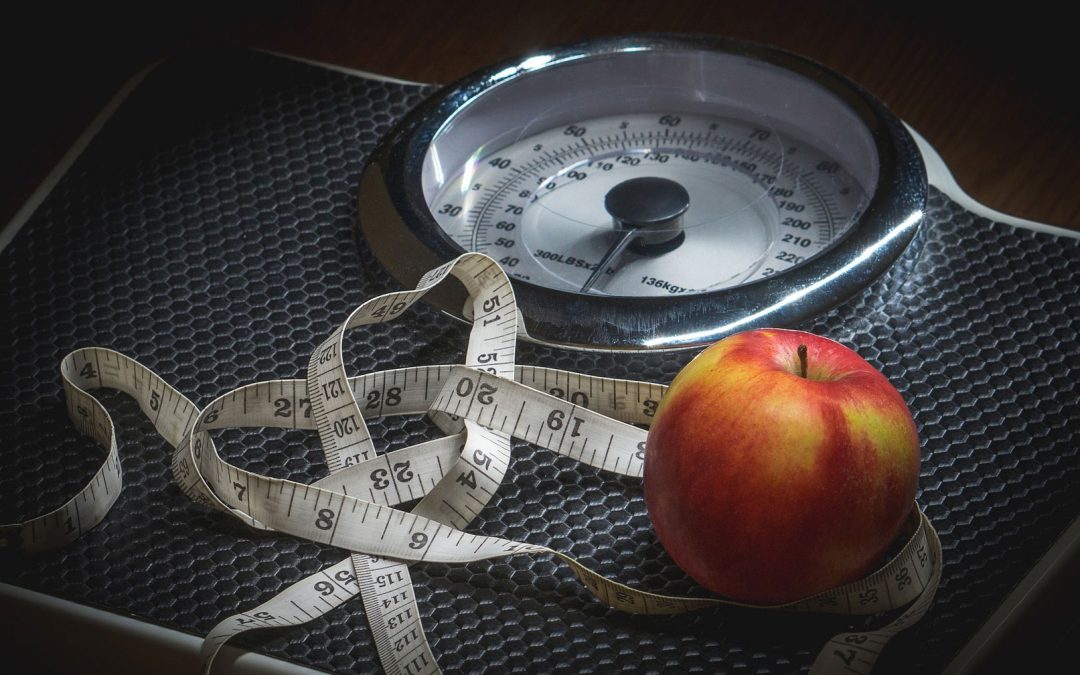
Monday 2 July 2018
When we do sport we start to feel that our body is alive, energetic, alert and so we are motivated to give more and more and to take care of it!
To take care of your body you need to understand what to assess: height, weight, waist size, mass, etc. But let’s start with the simplest things that we can do on our own to get to know ourselves:
- We can measure our waist size: for women it should be less than 80 cm and under 94 cm for men.
- We can work out our Body Mass Index (BMI) calculated as a ratio: (weight (kg)/height (m2); values between 18.5 and 24.9 tell us that we our weight is normal. Other values (< or >) may possibly indicate being underweight or varying degrees of obesity.
If these values are already making you think that you could really do with getting yourself healthy and in shape we can go into more detail, with the help of a specialist in the field, through with skin fold examination and bioimpedance to assess the water balance of your body, your baseline metabolism, fat mass and lean mass.
This means we can really get to know our bodies and take care of them with targeted nutrition and physical activity!
Every person and every constitution needs something specific which is very important for achieving any objective.
Nutritionist Biologist Francesca Fontanelli/Santucci Running
Read more







